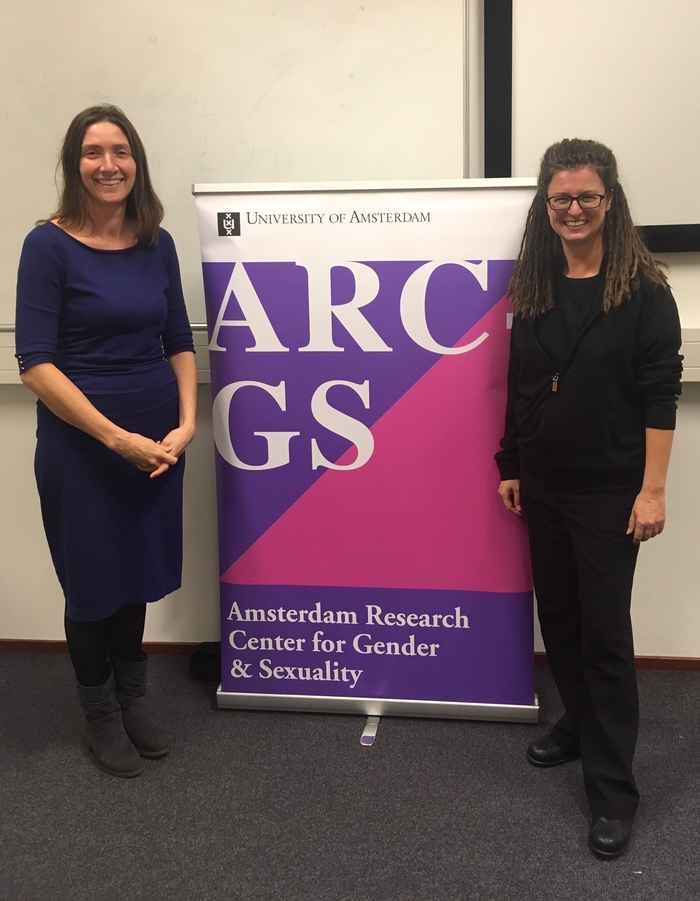“Discrimination Against Female Migrants Wearing Headscarves” Lecture by Doris Weichselbaumer (Johannes Kepler University Linz)
By Simone Schneider
Discrimination in the labour market
In economics, it is considered labour market discrimination if two individuals who possess the exact same qualifications and productive characteristics experience different treatment in the labour market. Different economic theories can explain discrimination of individuals. First, an employer's preference to recruit and work with people who possess certain demographic characteristics can result in discrimination in the labour market. Second, if an applicant's productivity is unknown due to a lack of information, group membership is used to infer an applicant’s productivity from. This process, known as statistical discrimination, occurs if employers regard members of certain groups as more productive on average than others.

Multiple prejudice against Muslim migrants
Furthermore, Weichselbaumer argued that anti-discrimination laws traditionally target only one specific group, whereas individuals belong to many different groups. Therefore, employers can also discriminate applicants on the basis of more than one identity category. Precisely with regard to this multiple discrimination, however, only limited knowledge exists to date. As Weichselbaumer explained, Muslims in Germany are often discriminated because of their immigration background. In addition, negative attitudes and prejudice towards Muslims and perceptions of Islam as a threat prevail. Therefore, Weichselbaumer examined the extent to which female migrant Muslims in Germany experience discrimination in the labour market based on their ethnic background and how their religious belief affects this discrimination.
Correspondence testing
To investigate this question, Weichselbaumer conducted a field experiment to determine the labour market discrimination of female Muslim migrants in Germany. Field experiments have several advantages compared to laboratory experiments - for example, researchers target individuals who make hiring decisions in real life, which provides unbiased responses due to the natural setting. In this case, Weichselbaumer carried out correspondence testing in which researchers submitted fake applications of fictitious candidates to actual companies. All these applications were totally equal and differed only in two demographic characteristics of the applicant. First, a seemingly Turkish or German name of the applicant simulated the applicant's ethnic background. Furthermore, photos in the applications of the applicant wearing either no headscarf or a headscarf simulated a Muslim belief. Those changed characteristics resulted in three different applications which the researchers sent to companies for three different professional levels, namely secretary, accountant and chief accountant. As job applicants in Germany are required to send large amounts of application material to companies, statistical discrimination should be largely irrelevant in this study.
Labour market discrimination of female Muslim migrants
Based on the study results, Weichselbaumer summarized that in this experiment the applicant with a seemingly German background received the most invitations for an interview, followed by the applicant with a Turkish background. The applicant with a seemingly Turkish background and Muslim belief received the least interview applications. Therefore, the discrimination in the application process was largest against applicants with identical productive characteristics but with a Turkish background and Muslim faith. In addition, an increase in the qualification level of the positions went along with an increase in the labour market discrimination. Discrimination against applicants with a Turkish background who wear headscarves was higher for positions for chief accountants than for secretaries. Hereby, Weichselbaumer explained that employers seem to find it more difficult to imagine a woman with a Turkish background and headscarf in a highly qualified position than in a lower-qualified position. The results of the experiment show that applicants with Turkish and Turkish Muslim backgrounds in Germany are indeed discriminated in the labour market due to their ethnic and religious background. Based on the study, Weichselbaumer argued that for the successful integration of migrants with various demographic characteristics in the labour market to occur, we must challenge such labour market discrimination.